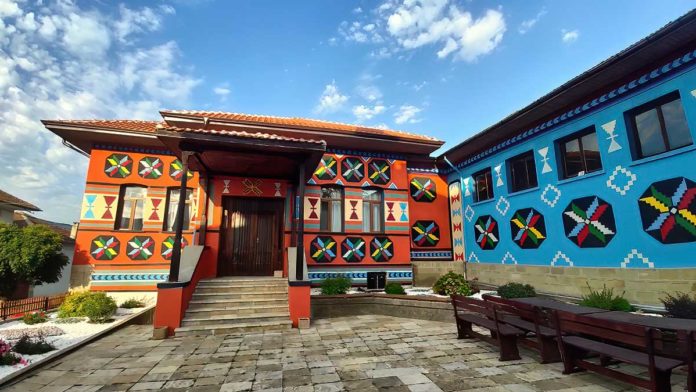Why go
In a green basin of the Eastern Balkan Mountains, Kotel is the kind of small town that rewards unhurried wanderers: weathered woodwork and stone lanes, a clutch of surprisingly good museums, and a living tradition of carpet weaving that still threads through local identity. It’s also the gateway to the Kotel Pass—one of the historic north–south corridors through Stara Planina—so getting here already feels like a journey.
Kotel at a glance
- Best for: culture lovers, craft appreciators, low‑key hikers
- Don’t miss: the Natural History Museum, Galatan School (Kotel carpets), Rakovski’s Pantheon
- Trip vibe: quiet mountain base with strong Revival‑era heritage
Top things to do in Kotel
1) Explore the Natural History Museum. One of Bulgaria’s richest regional collections, this modernized museum showcases more than 30,000 specimens—fauna, flora, geology—in immersive ecological dioramas, set within the leafy Izvorite park.
2) Step into the Galatan School. The 1869 wooden schoolhouse now hosts the “Old Kotel Carpets and Fabrics” exhibition, a beautiful primer on the patterns and weaving mastery that made Kotel famous.
3) Visit Kyorpeev’s House (Ethnographic Museum). Two Revival‑style homes (1872) exhibit everyday life, textiles, and jewelry—an evocative window into 19th‑century domestic culture.
4) Meet a giant of the Revival at the Rakovski Pantheon. The complex honors Georgi Sava Rakovski (1821–1867), revolutionary, writer, and organizer of Bulgaria’s national resistance; the museum interpretively links him to Kotel’s broader awakening.
5) Stroll the old quarter. Look for carved eaves, cobbled lanes, and Revival‑era houses (Koshichkov, Pisomov, Burnev, etc.) that sketch the town’s architectural DNA.
6) Drive or cycle the Kotel Pass. Beyond the scenery, the pass itself is a piece of Bulgarian infrastructure history—one of the classic north–south links through the Balkan range.
A (very) short history
Kotel appears in Ottoman records by 1486 and later becomes a seedbed of Bulgaria’s cultural Revival—home or schoolground to figures like Sophronius of Vratsa, Petar Beron, and Rakovski; a devastating 1894 fire reshaped parts of town. The weaving of Kotel carpets remains a defining craft.
When to go
- Spring & autumn: clear air, with carpet colors in museum displays popping under softer light, is excellent for low-to-moderate hiking.
- Summer: green and mellow; combine with nearby Zheravna’s outdoor sights.
- Winter: the pass can feel dramatic (and occasionally challenging); check conditions before driving.
Where to base
Stay near the center for easy museum hopping; look for family‑run guesthouses in restored Revival homes. For a nature‑first feel, choose a place near Izvorite park and walk into town.
Day trips
- Zheravna (architectural reserve): a wooden‑house time capsule and festival host (see the Zheravna guide below).
- Sliven (Blue Stones NP area): Broader museum options and hiking opportunities.
Practical tips
- Museum hours in small towns can vary seasonally—please confirm locally.
- Ask about carpet demonstrations; some curators and weavers love sharing the story.
- If driving the pass in winter, start early and carry warm layers.
Photo by mitzo_bs



